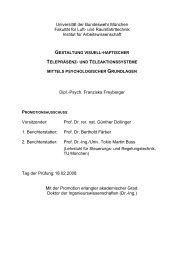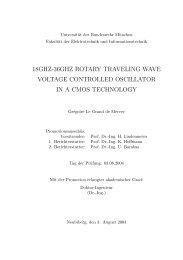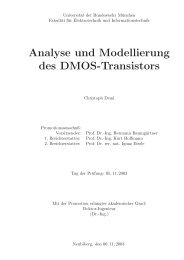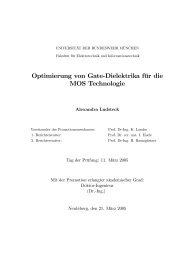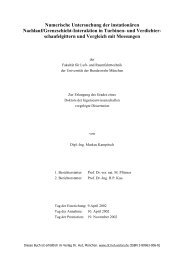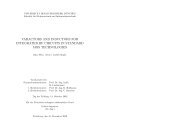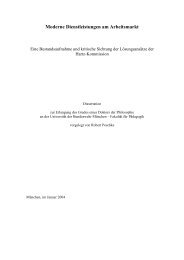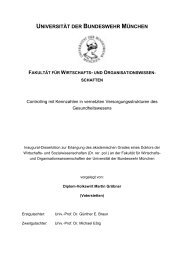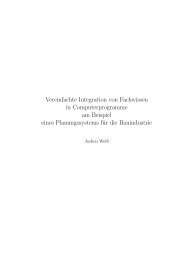Precise Orbit Determination of Global Navigation Satellite System of ...
Precise Orbit Determination of Global Navigation Satellite System of ...
Precise Orbit Determination of Global Navigation Satellite System of ...
Create successful ePaper yourself
Turn your PDF publications into a flip-book with our unique Google optimized e-Paper software.
Chapter 2 Observations <strong>of</strong> <strong>Orbit</strong> <strong>Determination</strong><br />
where<br />
n total number <strong>of</strong> parameters to be solved<br />
6 number <strong>of</strong> coordinate components <strong>of</strong> position and velocity <strong>of</strong> satellite<br />
m number <strong>of</strong> tracking stations<br />
For example, if eight tracking stations are tracking one satellite at the same time, at least 6+8=14 parameters<br />
should be solved. For one epoch, only 8 observations are available. That means in order to solve the orbit<br />
determination problem using carrier-phase observations, from the theoretical point <strong>of</strong> view, at least two epochs<br />
<strong>of</strong> observation are necessary.<br />
2.1.3.2 Error Budget<br />
For dual frequency carrier phase observations, ionospheric error will be significantly decreased. Another<br />
advantage <strong>of</strong> carrier phase observations is that the receiver noise is much smaller due to high resolution <strong>of</strong> carrier<br />
phase measurement.<br />
The carrier phase processed in the receiver is mainly affected by following error sources<br />
• Observation resolution<br />
• Variation <strong>of</strong> the antenna phase center<br />
• Variation <strong>of</strong> phase delay in the receiver<br />
• Instability <strong>of</strong> the oscillator<br />
• Interchannel bias<br />
Interchannel bias for each hardware channel can be <strong>of</strong> order <strong>of</strong> ±2.5 mm r.m.s. Phase delay variations depend on<br />
the satellite signal strength. The influence can be reduced by processing observations from many satellites.<br />
Oscillator instabilities play only a minor role in carefully designed receivers if the timing signal is taken from the<br />
satellite clock or a well-behaved atomic clock. The phase center variation is minimized and reproducible for<br />
well-designed antenna. For a modern microstrip antenna the variation is a few mm (Seeber, 1993). Observation<br />
resolution depends on the signal to noise ratio from the satellite signals. Currently, the observation resolution is<br />
about 1% <strong>of</strong> the signal wavelength according to rule <strong>of</strong> thumb.<br />
Using GPS as an example, the error budget <strong>of</strong> one-way carrier phase measurements are listed in Table 2-3.<br />
Table 2-3 Error Budget <strong>of</strong> One-Way Carrier Phase Measurements (GPS, L1)<br />
Error Source Error (m)<br />
Ionosphere 0.1<br />
Troposphere 2.0*<br />
Multipath 0.1<br />
<strong>Satellite</strong> Clock 3.0*<br />
Receiver Error 0.002<br />
Total (1σ) 3.6<br />
* based on Table 2-1<br />
From Table 2-3, the accuracy <strong>of</strong> a carrier phase observation is not much better than that <strong>of</strong> a range observation.<br />
Usually a carrier phase observation is used in differential way. Under this situation, the accuracy <strong>of</strong> the carrier<br />
phase observation is much higher than that <strong>of</strong> the range observation. See Chapter 7 for details. Another problem<br />
for carrier phase observations are initial ambiguities. It is difficult to solve initial ambiguites in real-time<br />
applications such as navigaion.<br />
2.2 Two-Way <strong>System</strong><br />
In a two-way system, the signal is transmitted and received by the same station. A typical two-way system is<br />
satellite laser ranging (SLR). Supposing that the signal is transmitted by the ground station at ti-1 and is reflected<br />
by the satellite at t = t + ∆ t . The same signal is returned and received at the ground station at<br />
i i−1<br />
1<br />
11



